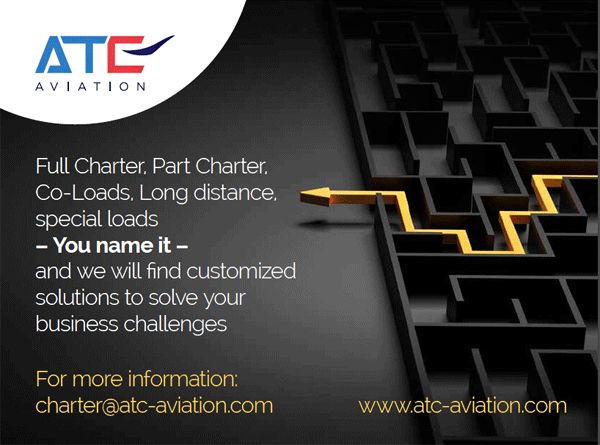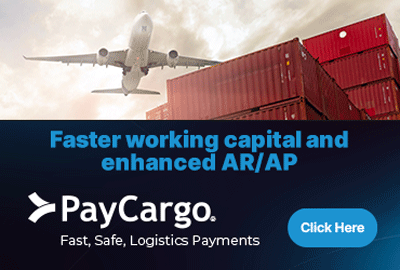
 |
| |
 |
 #INTHEAIREVERYWHERE |
| Vol. 22 No. 26 | Wednesday
August 9,
2023 |
| |
 |
|
 |
The Indian government has crafted a host of strategies to bring about widespread changes in the country’s cargo sector. Two dedicated railway trade corridors have been commissioned while trucking speeds have been enhanced and port turnaround times whittled down. These moves should bring down India’s high logistics costs from 14% down to the global benchmark of 8%. As for air cargo, Rajiv Bansal, Secretary of the Ministry of Civil Aviation (the highest-ranking bureaucrat in the ministry), pointed out: “India at this point of time cannot afford to have widebody 777 freighter aircraft.” Speaking recently, he reasoned that widebody freighters are “a costly business.” Well good for him. Also, he emphasized that India did not have the volumes to use widebody freighters to move cargo from one destination to another. “In India, only narrow body freighters can be used effectively. India needs to have great financial muscle to pull this off the ground,” Bansal said. “A lot of developments are happening in terms of developing dedicated freight corridors, trucking speed has gone up from Delhi to Mumbai, Delhi to Lucknow, Delhi to Kolkata; therefore, turnaround time has reduced.” These moves, hopefully, will start yielding results. However, as of today, India’s air cargo traffic volume did not grow in Financial Year 2022-23: it remained at 3.14 million tons, much below 3.5 million tonnes recorded in FY19: of this, 1.84 million tons was international cargo (both exports and imports) and 1.30 million tons was domestic. In fact, foreign air operators captured a major share of the air cargo – both exports and imports, around 95 percent of the market while Indian carriers attained only 5 percent. Most of this 5 percent is ferried by Air India and Vistara on widebody planes. Incidentally, India presently has only 14 dedicated freighters with all of them being narrowbody planes that cannot fly to long-haul destinations in the U.S. or Europe. Secretary Bansal also made it a point to highlight the fact that a lot more proactive industry involvement and robust dialogue was needed to usher in further growth in the air cargo sector. In line with Bansal’s advice for a proactive approach, Air India, the country’s national carrier gets high praise once again, having taken initiatives that will put it back in the ranks of major cargo carriers in the world and boost the development of an air cargo supply chain that will speed up exports. In fact, Air India is planning big: its order of 10 Boeing 777Xs, 34 A350-1000s, 20 787 Dreamliners, six A350-900s – all widebodies – will, significantly, raise the carrier’s annual cargo capacity to 2 million tons or a whopping 300% over the next five years. All these planes will provide belly capacity for non-stop connections to key export markets around the world. Most of these planes will start joining the fleet in 2025. Campbell Wilson, Air India CEO and MD, remarked recently that Air India saw “a huge potential in the air cargo industry, which the Indian Government plans to grow to 10 million tons by 2030”. He mentioned that Air India’s cargo division was in the process of implementing a series of strategic measures that would foster growth and strengthen our market presence.” Even as Air India readies itself for its air cargo business, Indian air cargo stakeholders have been demanding policy support from the government not only to enable new air cargo players to start operations but provide muscle to existing players to expand. That policy and support in reality, according to air cargo stakeholders, will help achieve the 2030 air cargo target of 10 million tons. Stay tuned . . . TG |
 |
If
You Missed Any Of The Previous 3 Issues Of FlyingTypers Access complete issue by clicking on issue icon or Access specific articles by clicking on article title |
||
 Vol. 22 No. 23 Predict The Future By Creating It Chuckles for July 13, 2023 IndiGlo For IndiGo CarGo Sky High Delhi Vaz Hey Friend Do It Again Paris Air Show Happy Returns |
 Vol.
22 No. 24 Vol.
22 No. 24Does Anybody Here Know How To Play The Game? Chuckles For July 24, 2023 Buffalo Jets Into The Future Hema Tanna All In The Family India Cargo Post Covid Slowdown It's A Good Life |
|
Publisher-Geoffrey Arend
• Managing Editor-Flossie Arend • Editor Emeritus-Richard
Malkin Film Editor-Ralph Arend • Special Assignments-Sabiha Arend, Emily Arend |
Send comments and news to geoffrey@aircargonews.com
|